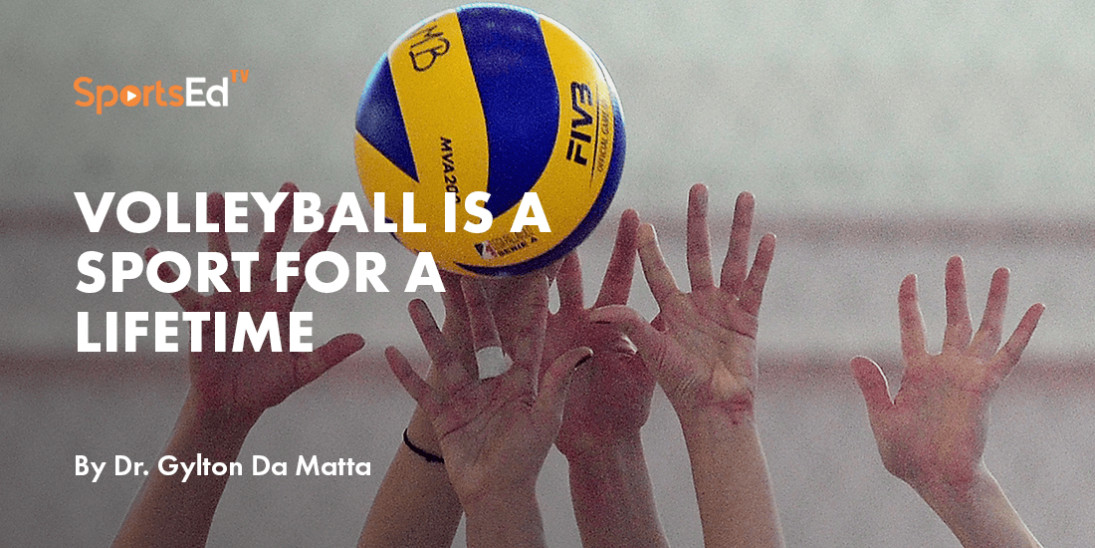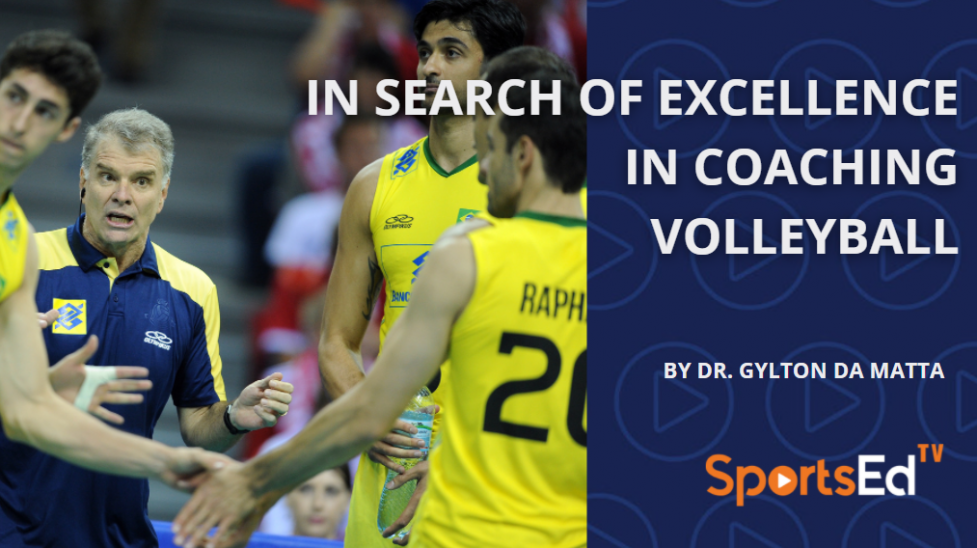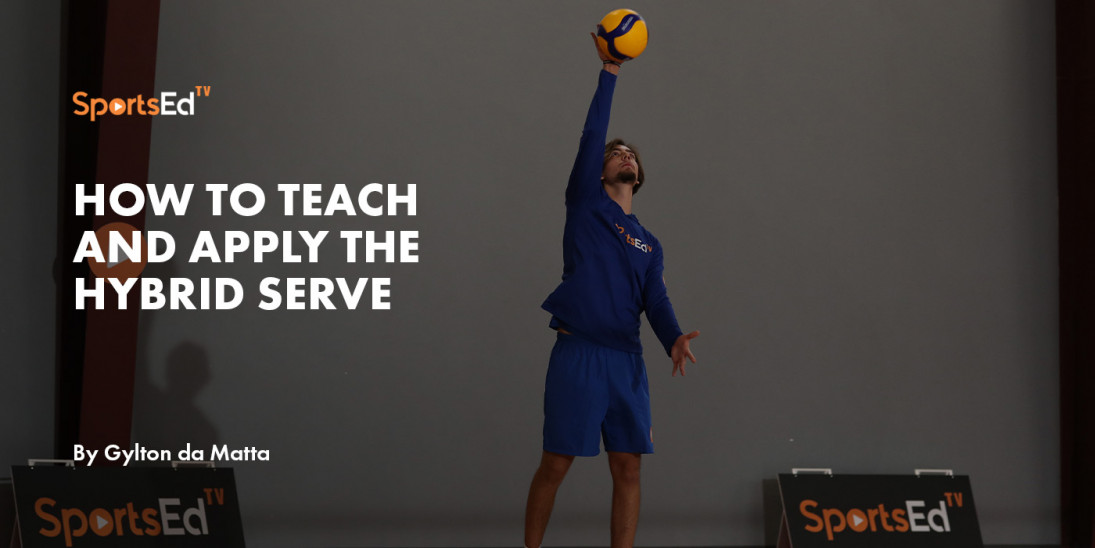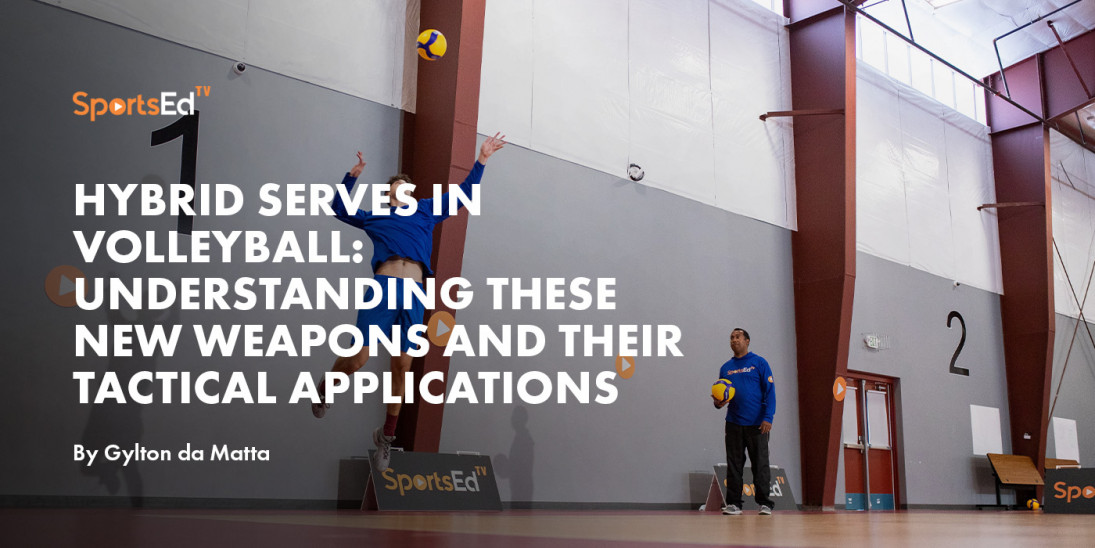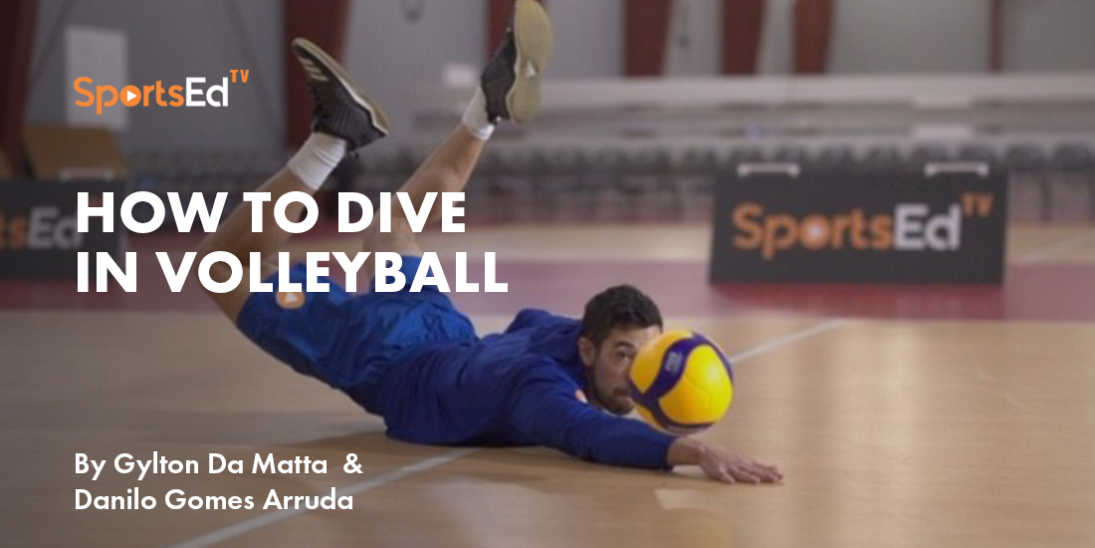Volleyball
Welcome and thanks for visiting...

One Inch Away from Volleyball Dominance
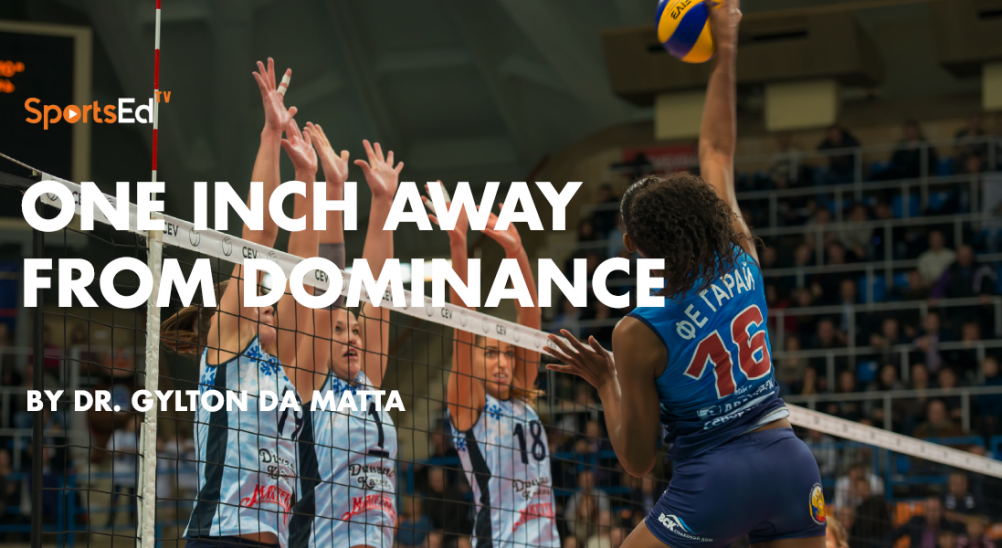
The United States is one inch away from dominating international women’s volleyball competitions.
From the top competition in the world to our middle schools and U15 club teams, if the U.S adopts to lower one inch of the volleyball net in middle schools and for ages 13-15, the technical expertise of millions of volleyball players will increase exponentially and the injury rate in volleyball will decrease.
In 2001, I wrote an anthropometric analysis about the impact of net height on athlete’s expertise development. I found that U15 players should play with the net one inch lower than women’s regulation net. (Da Matta, 2004). Why do 13-year-old players play with the same net height as the Olympians?
In every sport, there is a set of developmentally appropriate practice rules and procedures to match the growth and maturation of players with the competitive environment in which they perform. All over the world children from ages of 12 through 16 play and compete in distinct net heights that are commensurate with their physical and biological growth. And although the U.S. has just won the gold medal in the Olympics, it still has a 20-25% injury rate in a non-contact sport such as volleyball.
And, yet children now dream and ask: How can I attack like Jordan Thompson? The answer is across the U.S. and perhaps around the world, volleyball governing bodies should either adopt the one-inch incrementation of the net height for girls and boys ages 13-15. The purpose of this short argument is to reflect upon how volleyball can be more inclusive, more fun, and more appropriately designed for children ages 12 through 16.
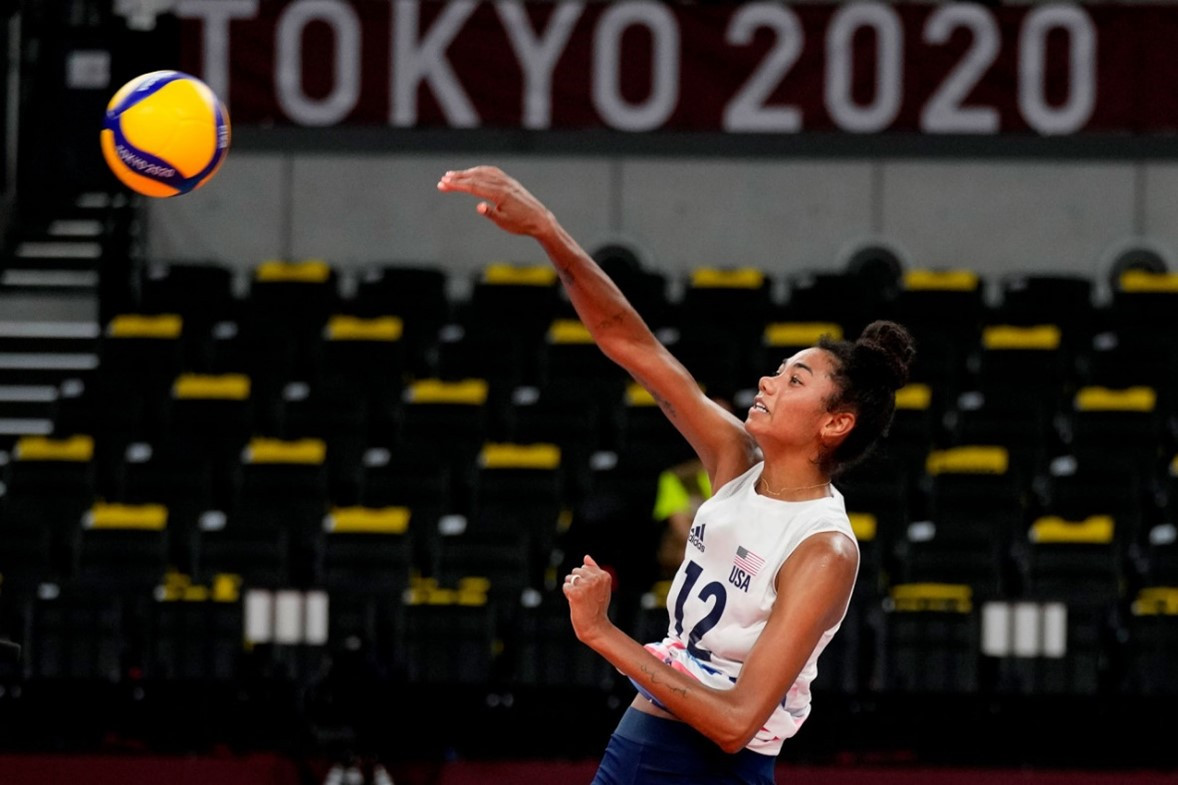
What should be the net height for children playing volleyball at ages 13, 14, 15, and 16? Maybe one inch lower. This is one of the main leading research questions addressed in my reflections every day. Watching volleyball in the Olympics is so much fun, but more than 900 million adepts of the sport also like to play and be physically active. Those who have seen the recent women's volleyball finals between the USA and Brazil had the opportunity to watch a true showcase of spiking styles. Certainly, the technical pattern presented by Brazil and the USA in the women’s final match, elicit the notion that both Brazil and the USA are adopting the international extended arm swing instead of the “bow & arrow” pattern. All players have demonstrated an arm swing concept in which elbows are extended and all players were also following through their hitting arm towards their body midline. Their spike approaches were linear, and a wide back pendulum trigged an upward swing of both arms, then connected with the loaded spike preparation in pronation of the striking arm. As we have mentioned before all top volleyball players also demonstrated a spiking grip with their hands scooped towards facilitating a full hand contact with the ball, just like shown by our top players, Jordan Thompson (USA) and Fernanda Garay (BRA). These are great examples of what is the body type of outstanding attacking players like, Jordan Thompson, an American opposite player who is 6' 4" and weighs 154 Lbs. (1.94 m and 70 Kilos, respectively), which, in my opinion, had the most efficient arm swing along with Fernanda Garay from Brazil. Jordan’s standing reach is approximately 4 inches above the regulation net. But, interestingly, at 13 years of age late maturing athletes, play at the same net height as Jordan Thompson.
Now that the women’s USA has won the gold medal in the Olympics, it is a great time to reflect upon ways to make volleyball more inclusive, fair, and developmentally appropriate for all. Volleyball can be of a gold standard if all children will be allowed to be playing and performing all skills in the game. For instance, there is a huge problem of early specialization that affects tall and short people. All U16 coaches like to think that they are in the Olympics! And sometimes, the volleyball programs forget that children are not adults in miniature (Da Matta, 2021).
The acquisition of an efficient attacking strike can prevent injuries in volleyball related to shoulders, hips, knees and according to the NFHS-CDC, by facilitating a smooth and balanced landing on the floor, even prevention concussions. However, from the ages of 13-16, the net height is a barrier for millions of children to learn how to spiking safely and appropriately (Da Matta, 2004).
In 2001, I was inspired to develop 16 refinement tasks in spiking in volleyball as part of my Motor Learning laboratory classes on applied neuromechanics. In the United States, I analyzed three "styles" as models, Flo Hyman, Tara Cross Battle, and Karch Kiraly. Internationally, I had Bernardi from Italy, Joel Despain, and Zorzi also from Italy. Below, I will present three refinement tasks that are aligned with the expertise development criteria demonstrated by these outstanding volleyball athletes (Da Matta, 2004, Da Matta, et. Al, 2021). The Tokyo 2021 women's match embraced the showdown of two of the best volleyball coaches in the world and a demonstration of the neuromechanics advancement in spiking in volleyball depicted by Jordan Thompson and Fernanda Garay. Jordan Thompson (USA) demonstrated extended body lines, a high spike reach, and a distinct follow-through at the midline of her body. Fernanda Garay (BRA) demonstrated a power style of hitting that focused on the hip extension followed by a strong pike movement in which she applied her whole body on the volleyball unleashing strong spikes. Although this analysis is not about orthodox nor aesthetics, I would like to highlight both styles because they present healthy principles of movement efficiency with proper landing with both feet.
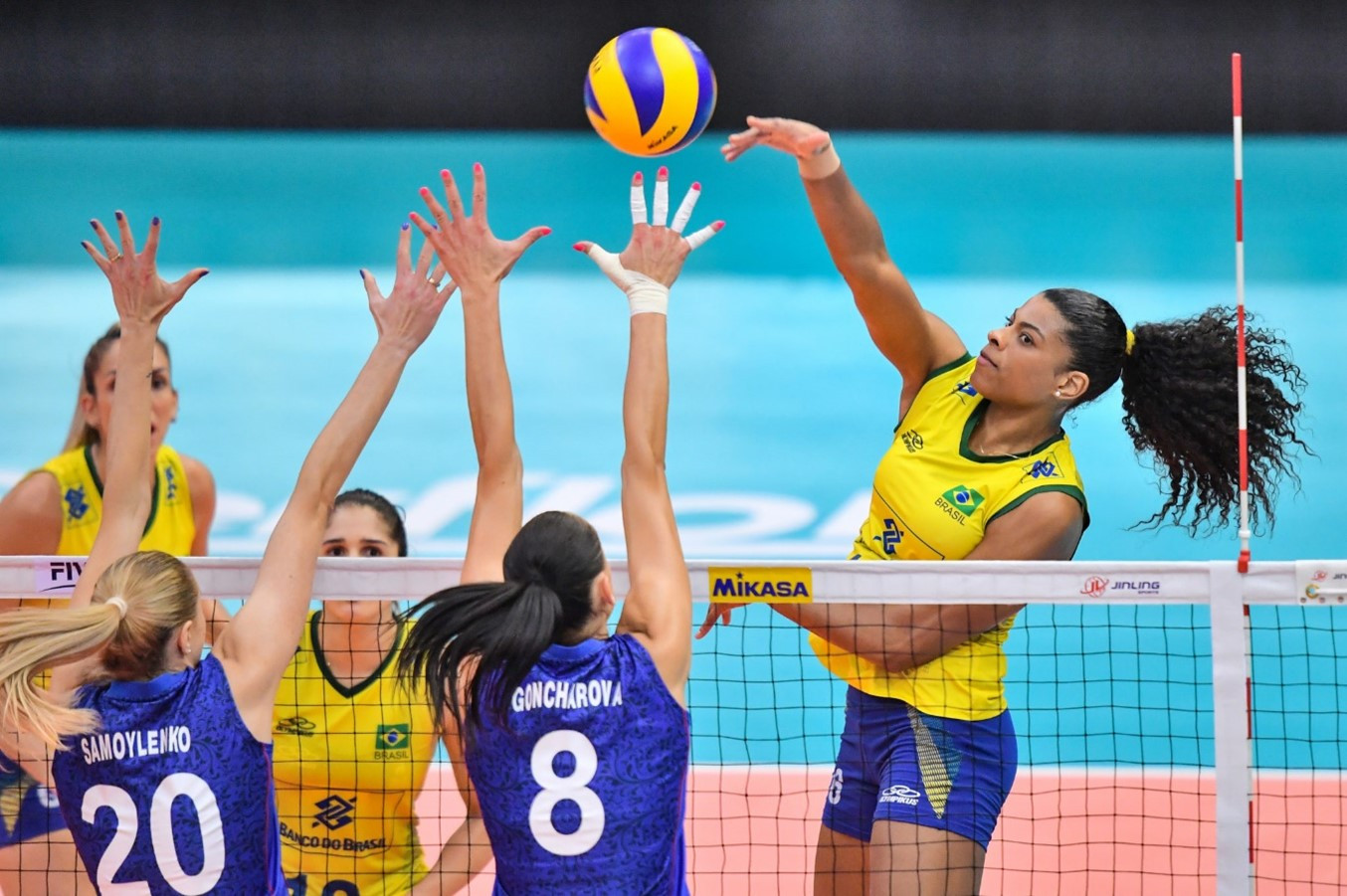
Figure 2: Fernanda Garay of Brazil and Jordan Thompson performing a very technical spiking movement.
Therefore, to teach volleyball spiking properly, I would like to borrow the technical criteria of these two outstanding world-class volleyball hitters to highlight the importance of three refinement tasks in teaching children how to spike. The first task is the Springboard drill that will allow players to correct their maximum reach and improve their timing. When learning volleyball, primarily in the United States children at age of 12 learn to spike at a 7 ft tall net. But just months after they complete 13 years of age, with their pre-puberty bodies, they jump to play with the same net as the Olympians do. All over the world, there is a progressive change in the net height that follows the growth curve of all children (sigmoid growth curve). While children are growing some mature faster than others and at different rates which are called the height peak velocity. Children with a fast height peak velocity are early mature and children with slow-fast height peak velocity can be late mature. For instance, according to biological and anthropometric science girl’s growth changes from 11 until 16 years of age and some late mature girls can grow until 19-20 years of age. Boys on the other hand tend to grow from ages 14 through 21 years of age.
During the process of learning how to spike for children ages, 12-16 requires individualization and customization. One strategy is to use a spike-ball at the athlete's maximum height making sure that the player is reaching the ball in front of her body. Below is a video of how coaches and teachers can customize and individualize practice without using the volleyball net, which in this case is a major hindrance.
When the player has corrected his/her body position and is landing without drifting. Then, coaches can challenge the learner by using the spike-ball focusing on jumping higher and landing on two feet.
The progressive implementation of net height is a very smart procedure that respects the growth and maturation processes of girls and boys. When 13-year-old girls play at the same net as the Olympians their maximum point of contact for spiking changes from 11:00 to 12:00. That means that young children get underneath the ball to clear the net in a spike action. All over the world the adoption of the one-inch incrementation per year protects the health and wellness of volleyball children while facilitates the acquisition of proper spiking techniques. Imagine how Jordan Thompson and Fe Garay would look like spiking in a men’s net (8 ft or 2.43 m).
This is a serious problem because by getting under the ball hundreds of thousands of children who play volleyball, in this case in the United States, are susceptive to have lower back injuries, lose body control in the air, contact the ball behind their bodies and land on their heels, which is harmful to the kids and a hindrance towards spiking successfully. So, to correct this issue, I created the Springboard drill for spiking and correct the landing. This whole issue can be observed in the naked eye and a regular person can see that with the height net, it is very difficult for young volleyball players to acquire an ideal spiking position like Jordan Thompson.
Another big problem is the fact that by not being successful in spiking many children do not feel motivated to socialize into volleyball and in fact, they simply quit or go to play another sport. This is unfortunate because volleyball is a great sport that teaches teamwork, discipline, self-esteem, and dozens of health skills to our youth. I think that with a simple decision to increment one inch for each year after children complete 12 years of age, it would be ideal to create a developmentally appropriate volleyball net and court scale that would be fair for all players and all children who want to play this amazing sport. Thus, by age of 16, all girls and boys would acquire a proper body position and have lots of fun by being able to spike safely, thus being able to play volleyball for a lifetime.
In the past 20 years, I have adopted the following refinement drills to correct athletes' body posture in spiking by using the springboard. Therefore, the springboard allows:
- Players to jump a couple of inches higher while hitting the ball in front of their bodies and at their midline.
- Players land on their toes following their heels, thus allowing the neuromechanics cushioning.
- Players to protect their knees, hips, and lower back, thus preventing career-ending injuries.
- Players to fully extend their hips in the aerial phase of spiking, thus allowing players to generate power through the extension of their hips (strong joint) instead of overusing their shoulders (unstable joint),
- An increase in the motivation for players from age 13-16 by being able to clear the net when spiking.
- Facilitation of the timing improvement by allowing players to reach the ball at the peak of their jumps.
- The creation of a practice effect in the situation when the springboard is absent, so volleyball players adopt the arms pendulum and the proper push of the ground with flow and efficiency. And it is fun.
The second task is to follow through in the midline of your body which also allows you to reach the ball at your maximum reach and at your focus point, where both of your arms meet at 11:00 o’clock. See figure one a technical behavior that also indicates that the player has good timing and reaches the ball at the peak of her jump.
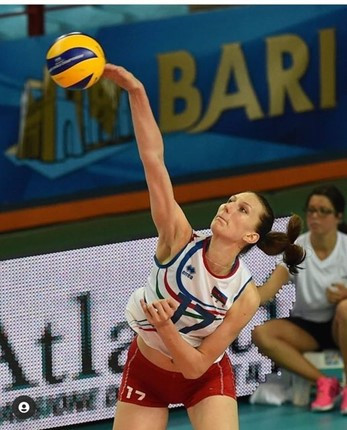
At young ages, volleyball players can not acquire this posture because the net height hinders and represents a barrier to the acquisition of an ideal spiking form. Children adapt by getting under the ball and reaching the ball on the sides of their bodies to clear the net.
For instance, in the U.S. there are more than 24 national qualifiers tournaments tailored to U15 girls. And most middles, setters, liberos, outside hitters, and opposite players are already pre-selected and early specialized to their level of expertise. But that does not benefit anyone. From an institution standpoint, all that the volleyball system is doing is to select the early mature, and yet, even very tall players do not experience the thrill to pass, play defense and execute floor defense skills. That means that hundreds of thousands of volleyball players are not learning the whole volleyball game but such parts of it because of misinformation and a misconception.
If the Physical Education teacher or certified volleyball coach has access to a springboard and a gymnastics mat, then, he/she can implement the refinement of spiking using a springboard on the take-off to make sure the ball will be reached in front of the hitter. The toss needs to be performed precisely when the player starts the first step, of the three-foot spike approach. The coach can place the ball at the spiking contact point and monitor if the player is landing safely on two feet. This task presentation and the use of the devices must be adopted exactly as presented in the video below.
Conclusion
We all care for all of our children who play volleyball from 8 to 80 years of age.
In the picture below, we see Dr. Cecile Reynauld who has dedicated her life to protect girls and boys through the Safe Sports approach. And we also have, Karch Kiraly who has led the U.S. Women's team to earn the gold medal with humbleness, hard work, science, compassion, and volleyball expertise. But both Dr. Cecile, as well as Karch Kiraly, share a sense that the health of all volleyball players matters. Moreover, (this is my opinion) they believe that a volleyball team is a community that needs to build a program environment that is just, equitable, diverse, inclusive, and safe (J.E.D.I.S., by Dr. Da Matta).
We have to confront the myth of height in volleyball. Maybe to be a gold medalist in the Olympics height is a factor, but to have a gold medal program short and tall players should have the opportunity to play the game and to learn all skills so they can enjoy volleyball fully. For instance, all over the world volleyball programs such as Brazil, Canada, Russia, China, Italy, and Turkey adopts different net heights for different age groups. In Canada, Charles Cardinal shared with me that youth competitions for 14 and under men 2,20 m and 14 and under women 2,15m; 15/16 & under men play with the net at 2,35, 15 & under women at 2,20 m, above 16 both men and women play at the regulation heights (2,24 m for women and 2,43 m for men).
As volleyball is today, there is a huge possibility that for this 21st Century more players will learn and play all skills and enjoy all aspects of volleyball. Thus, I would like to recommend the implementation of a developmentally appropriate net height that will allow millions of volleyball players to spike, block, and enjoy the whole game for a lifetime.

In my reflections and conversations with friends and colleagues such as Dr. Cecile Reynaud (AVCA award recipient) and Karch Kiraly (Gold Medalist in Tokyo 2021), it is evident that athlete’s wellness and health is a top priority at all levels. I would like to recommend a study on the implications of creating a developmentally appropriate body scale net height for young girls from age 13-15 to mitigate any possible concern regarding protecting, developing children, and most of all being fair by allowing children to play in a net height that is commensurate with their biological growth and development.
